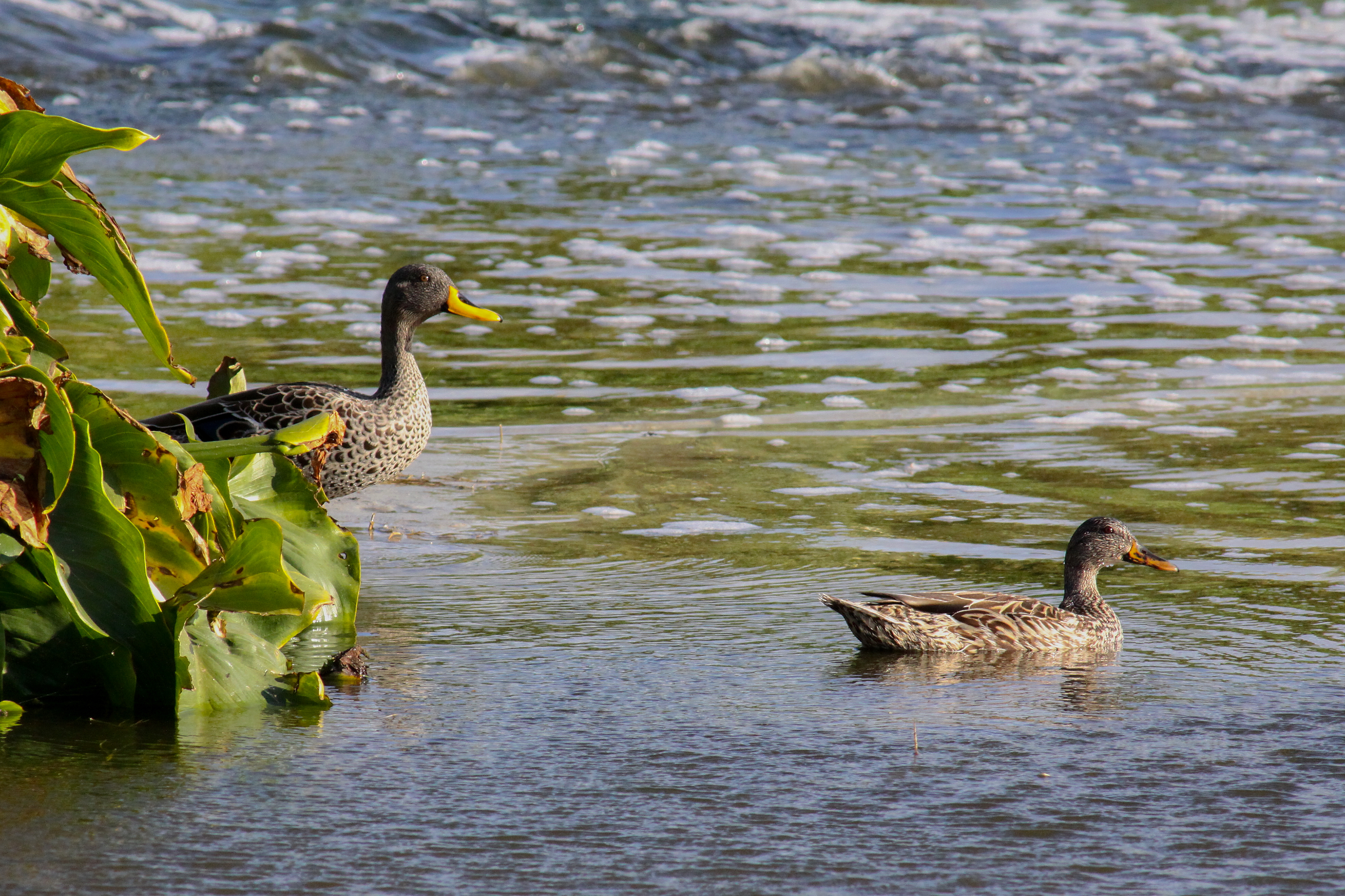By Joshua I. Brown
Linked paper: Strong population structure and limited gene flow between Yellow-billed Ducks and Mallards in southern Africa by J.I. Brown, P. Lavretsky, G.S. Cumming, and J.L. Peters, The Condor: Ornithological Applications.
Affectionately known to some as the “green-headed monster,” the Mallard is one of the world’s most recognizable species of waterfowl. It is hard for us to imagine a local city park or pond without the iridescent green head and bright orange feet of a Mallard, waddling around the edges of the water looking for a free handout from a passerby. While Mallards were originally restricted to North America and the central parts of Eurasia, humans have introduced them on every continent except Antarctica for hunting and agricultural purposes. The iconic green head of the breeding males is highly revered by hunters around the world, and the Mallard’s ability to adapt to and breed under any conditions has also made them an ideal choice for farmers interested in raising waterfowl. Unfortunately, these same traits are what have given Mallards their “monster” nickname, as they have become a major threat to a few other closely related species of waterfowl.
The “mallard complex” comprises 14 closely related mallard-like species of duck that are uniquely adapted to various habitats and environments around the world. Nearly every species within the complex has come into contact and is known to hybridize with the Mallard. It’s important for wildlife managers to monitor the effects of hybridization on the genetic integrity of both species involved. Our study system, described below, provides a unique opportunity to investigate how hybridization affects the evolutionary trajectory of closely related species under differing environmental and ecosystem pressures.
We were specifically interested in the rate at which Mallards hybridize with another under-studied member of the mallard complex, the Yellow-billed Duck. Yellow-billed Ducks are found across southern and eastern Africa and have been hybridizing with introduced Mallards along the Southern and Western Cape in South Africa since the 1960s. To assess levels of hybridization and gene flow, we looked at both nuclear and mitochondrial DNA, using genetic sequencing techniques specifically developed for members of the mallard complex that provide more data by sampling numerous areas throughout the genome. We chose this technique because recent studies have shown that traditional methods for identifying hybrids, such as evaluating plumage characteristics, are insufficient for accurately estimating hybridization rates between closely related bird species.
We used Mallards collected from their native distribution and Yellow-billed Ducks from areas where they overlap with feral Mallards in southern Africa. Despite past reports of Mallard x Yellow-billed Duck hybrids on eBird, we found no evidence of recent hybrids or even late-generation hybrid backcrosses based on our analysis of nuclear DNA. This is good news for Yellow-billed Ducks in South Africa, considering other scenarios where hybridization between Mallards and a mallard-like relative (Hawaiian Ducks, New Zealand Grey Ducks, Mottled Ducks) threatens the genetic integrity of the local endemic species.
Despite this good news, however, evidence of gene flow in their mitochondrial DNA (mtDNA) suggests that this story is not quite as clean as we had thought. We found that mtDNA, unlike nuclear DNA, showed small amounts of gene flow from Mallards into Yellow-billed Ducks, which would suggest backcrossing of hybrid offspring into Yellow-billed Duck populations at some point in the past. When we looked a little deeper at unique mtDNA sequences shared by the two species, however, we found significant divergence in Yellow-billed Ducks from Mallards that could only have accumulated after a long period of isolation. We can now breathe more easily, knowing that any gene flow from Mallards likely came from ancient, not contemporary, hybridization.
This study was especially exciting to me personally, as it is my first first-author publication and represents everything I hoped to learn when I started graduate school. We were able to utilize genetic sequencing methods to directly inform the conservation status of a unique and under-studied waterfowl species only found in southern and eastern Africa. Despite our fear of the green-headed monster rearing its hypothetical fangs at yet another mallard complex species, we were happy to find that Yellow-billed Ducks are currently not under any major threat due to gene flow while simultaneously uncovering evidence of ancient contact between these two species.
